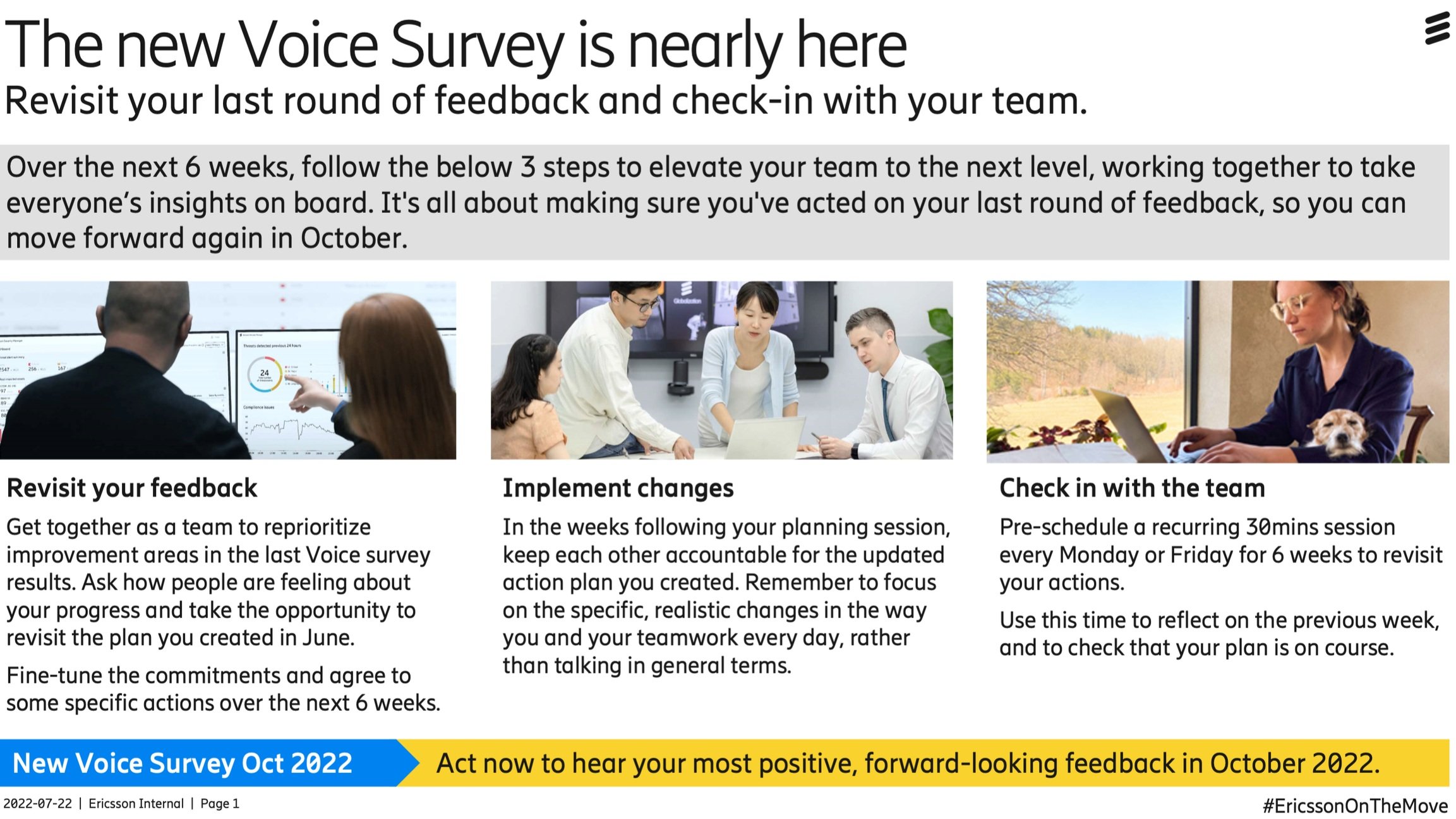Psychological Safety and Speak-up at Ericsson
Over the past four years of collaborating with Ericsson, we've worked on various D&I-related challenges and have made significant strides in gender equality. However, we only recently started exploring new cultural territories, particularly psychological safety, and speak-up culture, with the Oceania, Asia & India market area (MOAI) of the company. For the last almost 4 years Ericsson has been bettering its culture with focus and intention through a cultural transformation program called “Ericsson on the Move”. Psychological safety is closely connected to empathy and humanness and speaking up, two of the five Focus Areas of Ericsson on the Move.
The below experiment comes hot on the heels of our work with Novartis, which was recently published in MIT Sloan Management Review and found a way to improve psychological safety through 1:1 meetings. In this trial at Ericsson, we focussed on another high-priority moment for psychological safety: the period right before and after a manager and their team receives employee engagement feedback and are asked to act on what they have heard. The purpose of this experiment was to really understand how our leaders can create a culture of speaking up effectively.
Background
The challenge was simple – how do we help teams use survey feedback as the catalyst for an open conversation and an action plan for change? After a lot of thought, we decided to do something a little unexpected – intervene in the six weeks before the survey is released and focus teams’ on closing-out actions from the previous round of feedback.
Why did we end up here? We wanted to use the last survey to remind teams that action is expected, change has happened, and they should see the next round of feedback as another opportunity to learn and grow. We hypothesised that if this nudge was successful, they would approach the new survey feeling more willing to speak up and reassured that action would be taken as a result.
We decided to engage the teams in the months leading up to the next survey to create accountability through an upcoming deadline, as well as to create anticipation that the results of the effort can be visible in the near future. We created a 3-step guide for managers to implement in the six weeks leading up to the next bi-annual check-in and shared it through recurring emails with managers.
By involving the team in the process, we created a commitment device that fosters accountability and encourages behaviour change. Previous research has shown that involving stakeholders, such as a manager's team, can be an effective and low-cost behaviour change tool. Additionally, regular meetings provide employees with the opportunity to speak up, ask questions, and develop psychological safety.
To test our hypothesis, we randomly assigned 250 managers into a treatment group that received our guidance and a control group that continued with business as usual. Ericsson's internal comms team delivered the instructions to the treatment group managers via fortnightly reminder emails. Once all the responses were collected, we analysed the results.
Results
When we analysed the results at group-level, we were delighted to find that our intervention had a small but statistically significant effect on five questions that asked employees about speak-up culture and psychological safety at Ericsson:
Agility – My team adapts well to change
Respect – I am treated with respect and dignity
Challenge – I feel free to challenge the way things are done here
Belonging – I feel a sense of belonging at Ericsson
Innovation – I am encouraged to find new and better ways to get things done
However, on closer analysis, we found that this treatment effect was driven almost exclusively by the teams that scored in the lowest 25% on the pre-treatment survey. These teams showed the most significant improvement in response to the treatment (+4.1 pts), representing a much larger 10% increase. In short, we’d helped the teams that needed it most and knew precisely where to roll out our intervention in future surveys.
Our intervention was effective for the teams who scored lowest in psychological safety.
Takeaway
Our study identified a simple, low-cost, low-obtrusion intervention that effectively improved psychological safety for teams that needed it most. We used existing structures for measurement and inspiration for the intervention, which shows that improving psychological safety can be achieved without disrupting managers’ and their teams' usual workdays.
Most importantly, we tackled a problem so often raised in organisations – how do we actually use our investment in engagement surveys to bring about cultural change? And how do we make sure we achieve the same effect in the long term? Once again, we share this study for others to learn and build upon and we call on others to continue this research.
Get in touch with us and we can set up the experiment within our Psychological Safety Lab to find solutions for your organisational challenges!


